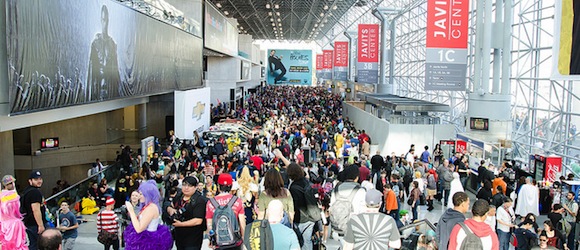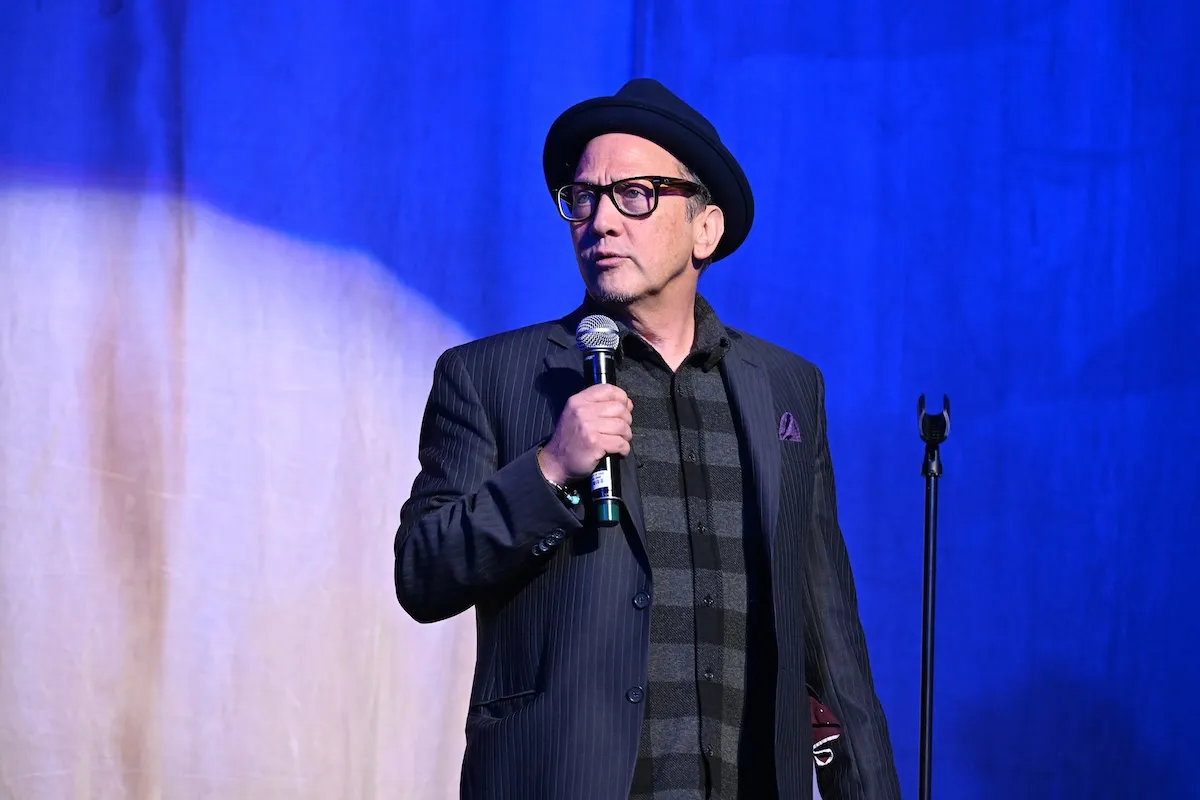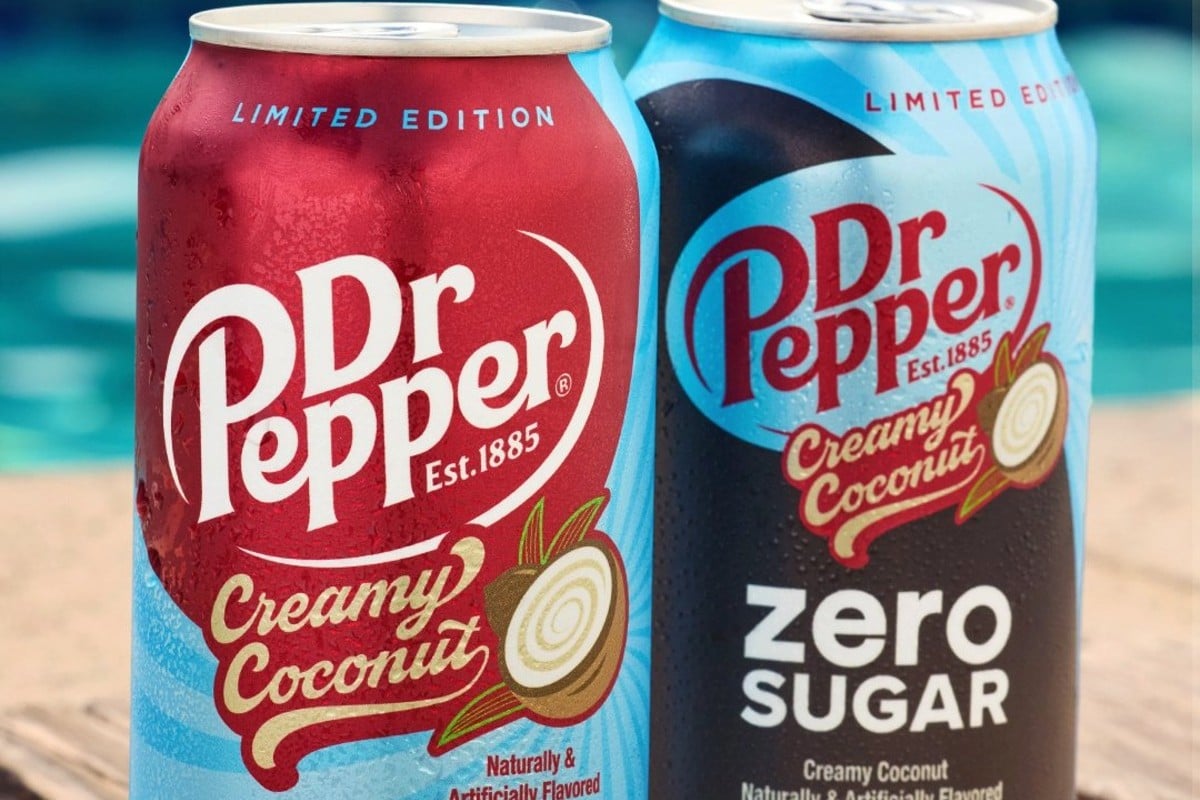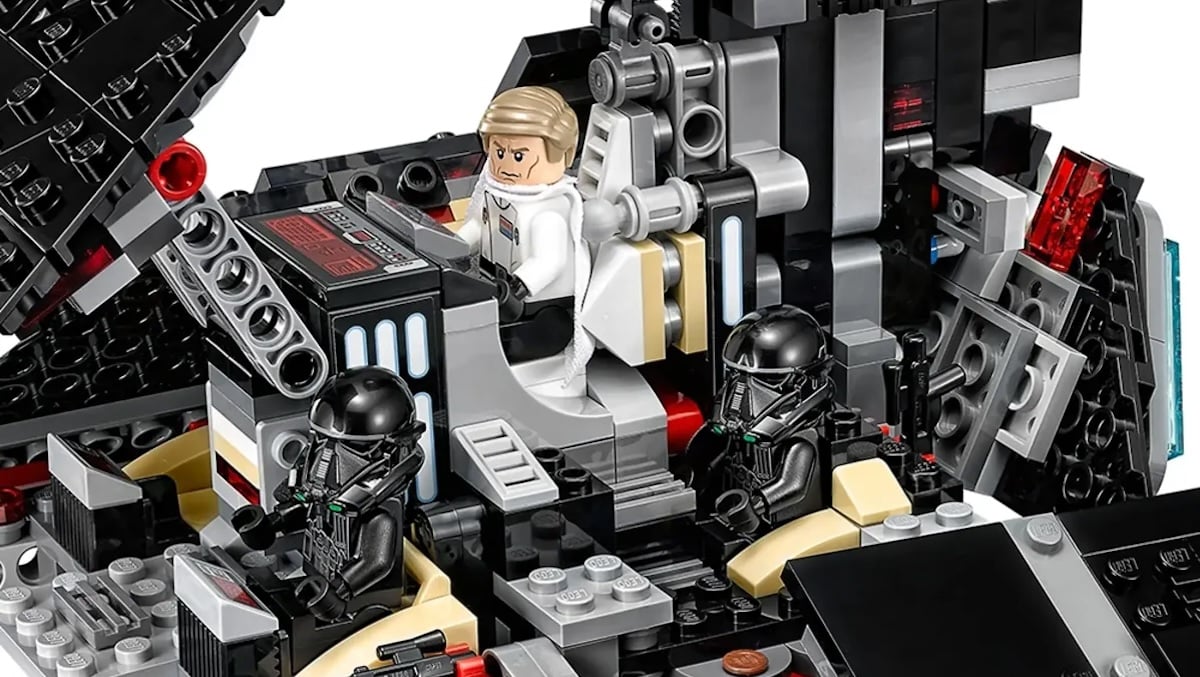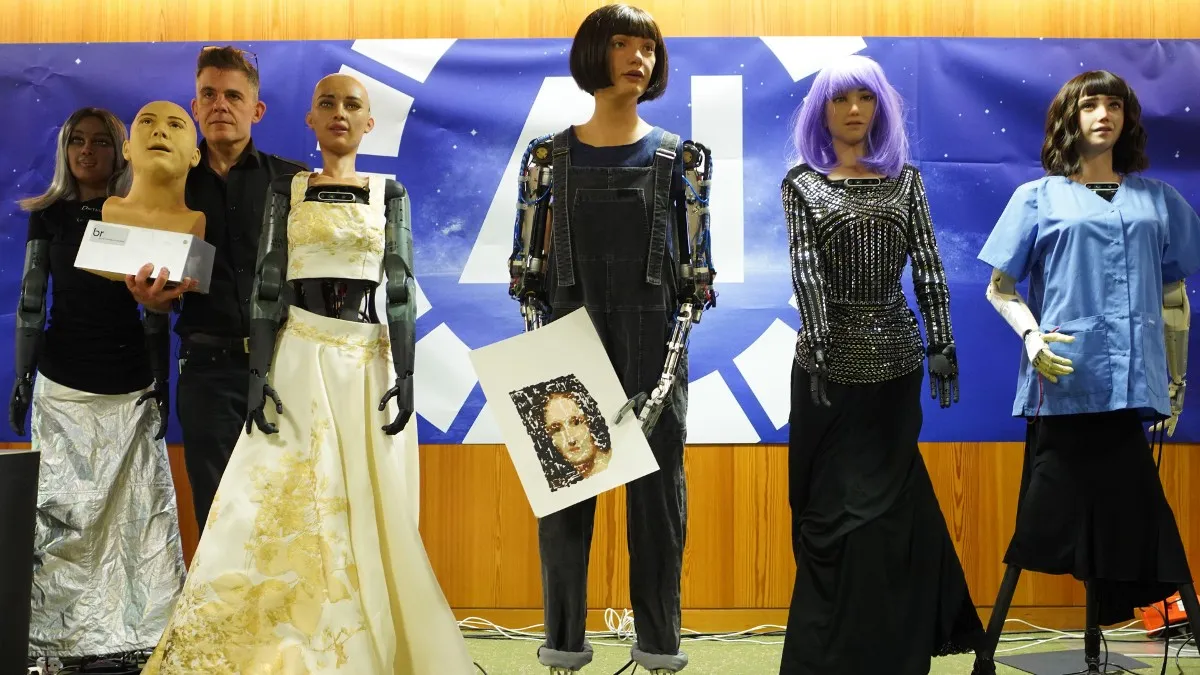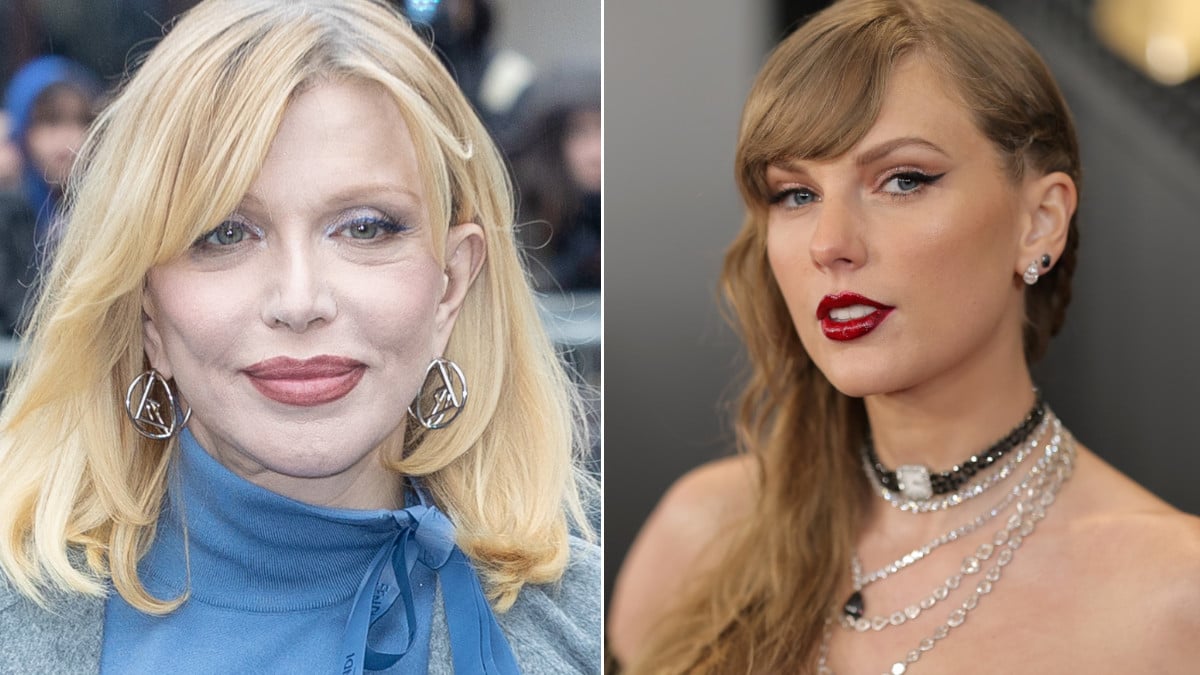We were too busy doing our panel to record our panel at New York Comic Con this weekend, so we reached out to a friend of the blog (this isn’t the first time he’s written for us, but, well, it’s been a while) to provide us with recap. So if you weren’t there, here’s what happened! Buh-gow!
This past weekend, The Mary Sue hosted its first-ever panel discussion; in it, a group of six fans and creators talked about diversity in media, finding a character you can identify with, and what makes the X-Men so fabulous.
When a volunteer staffer attempted to reorganize the line for the Mary Sue’s NYCC panel into something he viewed was more orderly, the crowd objected since it unfairly penalized people who had been waiting the longest. Instead, they self-organized in the way they deemed fit. Once inside, a girl dressed as a cat politely asked if I could see over her ears, and someone else asked me if I was dressed as either Carlos or Cecil (neither, I was just wearing a purple tie). There was still a maze of people outside the doors when, stalling during some brief technical difficulties, panel member and longtime comic book artist Phil Jimenez asked “who drove?” One person did: a woman in a 1940s army outfit, probably Peggy Carter. She had driven from Illinois.
The reason for her incredible over-land journey would have to wait, as Mary Sue associate editor Jill Pantozzi took the center podium and welcomed the crowd, to huge applause. Any fear that we’d see a repeat of the heckling at SDCC’s Women Who Kick-Ass panel evaporated.
We were here, she said, to talk about diversity in geek culture. “Something we want to see more of.” Not just the gathered fans; NYCC 2013 also featured a panel on people of color in geek media, another on LGBT characters, and several panels on women in media and the fandom. There was, clearly, a titanic shift within the con.
Though only implicit, the first questions put to the panel gave them an opportunity to make the case for increased diversity in media. To say, in personal terms, why a spectrum of characters is good for the spectrum of geeks.
“I came out to my parents the same week Willow did,” said blogger and cartoonist Kate Leth. That was the first character that connected with her, but it wasn’t who she really identified with. That would come later, when she read Erika Moen‘s comic Dar!. “I’m bisexual, and in comics that’s played off as characters who are very seductive. But for me, it’s more of a background thing.” Finding a character whose sexuality was just a part of their makeup was ground breaking. “I remember reading Dar! and thinking ‘oh my god, this is me! I get this!'”
Many of the panelists said they’d been forced to identify with characters that didn’t look like them, but it was a very different experience for Jimenez. “I am the product of white, male privilege,” he said. “My expectations about representation are different because I’m in every sort of media.” Instead, the characters he liked had qualities that he valued. “They represented and epitomized things that were important to me.” For Jimenez, many of the qualities that spoke to him were found in Wonder Woman, a character he wrote from 2000 to 2003. “I just connected with that character on a thousand levels,” he said.
“Wonder Woman is the epitome of a queer character, and I’m using that term not simply as ‘gay’ but in the broadest sense.” Wonder Woman, he said, was anti-assimilationist, anti-patriarchy. “A bunch of anti-‘s, really.” But Jimenez pointed out that there is hierarchy to what people identify with, layers of personal meaning that connect us to characters.
Growing up gay, Jimenez said that he found the outsider status of the X-Men attractive because of “their sense of fabulousness.” To him, their otherness was something special; a positive thing. “These were characters that were all pretty fab looking, lived in a mansion in New York, wore sexy clothes, and traveled around the universe. It seemed pretty good!”
N.K. Jemisin, author of The Hundred Thousand Kingdoms and other books, and a panelist on two of NYCC’s panels about race and diversity, also looked to Wonder Woman as a character she connected with early in life. “I could spin around like her and I could sing the song,” she said, in reference to Lynda Carter‘s TV portrayal of the character. RoboTech‘s Claudia Grant was also a touchstone for her. “It was the first time I’d seen a black woman in anything except Star Trek, which was old,” Jemisin paused, admitting that as a child Star Trek had lead her to believe that diversity in science fiction was a thing of the past. “It’s like, they used to be able to do that stuff, but not anymore.”
It’s in fantasy that Jemisin has made a name for herself, but as a black woman she said that the genre was unwelcoming. “It didn’t occur to me that that I could have any investment in mythology,” she said. That changed in high school when a friend thought that the non-white characters in Elf Quest would be appealing to her. “She was so oblique I had no idea what she was talking about,” reflected Jemisin. “She said, ‘there are these people who are kind of darker…sort of.'”
The impact the series made Jemisin was immediate. “I had never thought there could be black elves,” she said.
The Mary Sue managing editor Susana Polo reflected that her discovery of Batman went hand in hand with her discovery of Rene Montoya. “I noticed that there was a brown-skinned female cop in Gotham that said Spanish words.” The character’s appearance captivated Polo, until she finally realized “this is a thing I can no longer pretend is not important to me.”
But it wasn’t quite the ‘that’s me!’ moment, like Leth had. That didn’t come until this when B’Elanna Torres, the half-Klingon half-human chief engineer on Star Trek: Voyager, walked onto the screen. For Polo, who is a bi-racial American, it was a profound moment. “I just found me,” said Polo. “I just found me in Star Trek.”
The bi-racial experience is one, said Polo, that is often ignored by creators. After all, she said, it’s been hard enough to encourage writers to expand the diversity of characters in their work. “It’s doubly challenging to write a character […] that belongs to two cultures you don’t belong to.”
Like Jimenez, it wasn’t appearances but the morals of Superman that first connected with comic artist and writer Jamal Igle. A bi-racial kid growing up in Brooklyn, Igle said he felt little connection to the black characters he encountered. “I looked to Gary Coleman or Urkele depending on the era,” he said.
It was later, as a comic’s creator, that Igle was able to forge a deep connection with a character–one he worked on. “I ended up infusing so much of myself into Jason that I began to identify with him” said Igle of Jason Rusch, the alter ego of the superhero Firestorm. “I am Jason Rusch and he is me.”
Igle’s inability to find a character that reflected him and his experience wasn’t unusual. “A lot of us probably had none of that when we were younger,” said Pantozzi. “I had to read things with all dudes in it all my life, and I had no problem with it.”
But that experience of finding a connection was really important to Leth. “I get really excited for strong female characters,” she pointed to the upcoming Hawkeye story arcs which feature Kate Bishop. But she admitted to being a little cynical about recent attempts to reinvent existing characters as gay, or minorities. “It’s nice to change these characters, but [the publishers] are doing it as a sales pitch.”
“It’s all marketing,” agreed Jimenez. He was quickly followed by Igle, saying that modern comics, regardless of diverse reinventions, were “brand management. That’s all it is.”
Because long-running characters have history means that they have more weight, and gravitas. It’s easier, said Jimenez, to convince an audience to care about those stories. “It’s so much easier to sell Green Lantern than a new character who’s gay,” he said. “I personally have no qualms about taking a preexisting character and revitalizing them.”
Transferring a story from one form of media to another also provides an opportunity to revitalize characters. Jemisin illustrated this with the character of Arwen, from The Lord of the Rings. “Arwen knits for the whole book, but in the film Peter Jackson felt compelled to give her a bigger part.” For Jemisin, this was a good practice since many older stories and characters reflect a world view that simply did not value diversity.
“The original forms of these properties were unbalanced to begin with,” said Jemisin. In traditional fantasy, she said there’s “nothing remotely represented but straight white guys who used to be farm boys but are secretly kings.” But even transforming older properties to have more inclusive casts doesn’t change how those stories are written. Jemisin described having her excitement over the ensemble cast of Agents of SHIELD dashed because she felt the show was “so intensively interested in ‘tech Buffy’ and ‘white-bread McLantern jaw.'”
“I expect better these days,” said Jemisin.
But even when black, gay, or women characters are available, Jimenez related that consumers themselves may self-segregate. “I talk with librarians about this all the time, and they struggle to get boys reading books with female leads, while girls are encouraged to read both.” He placed the blame squarely on homophobia and misogyny for creating a fear that boys will be somehow degraded by anything other than masculine media. “Boys are not allowed to connect with girl characters,” he said. “They’re not trained to it, and they’re not expected to.”
For Polo, the limitations of race and sexual identity that’s imposed on characters was anathema to their roles–particularly superheroes. Classical heroes, she said, go beyond human ability to show us that it can be done, and overturn the implicit body of work that says it cannot. Citing DC Comics’ recent botched handling of a gay superhero marriage, Polo said “that’s a hurdle that is super for regular people right now.” If our heroes can’t cross those boundaries, the question of who can follows naturally.
There was a clear consensus among the panelists, which Leth summed up simply: “creators should include more diversity because it’s exciting!”
Igle, too, was unequivocal. “Anything that you can do to create more diversity–create more characters, change an existing one–do it,” he said.
Jimenez agreed, saying that the rarity of non-white, non-straight, non-male characters saddled what few there were with unreasonable expectations. “They have the unfortunate responsibility of representing an entire group of people,” he said. The solution was simple: “the more characters we have, the more character development we can have.”
It seemed like this call for improvement resonated with the audience, who took the Q and A section as an opportunity to talk about the characters that had mattered to them, the lack of characters that reflected their own lives, and how to break down self-imposed barriers on what kids should read. The thread that ran through it all was a question of what what (if anything) they could do about it.
There was little time for an answer; the convention staff had opened the doors and the next group was ready to come in. “It’s a very one on one kind of thing,” said Pantozzi, the audience keeping the sound of gathering their belongings to a respectful minimum. “We can write as many posts as we want, but if you’re talking to someone they can reach out to so many people.”
(top pic via Flickr.)
Max Eddy has written for a one hundred-year old magazine, the seventh largest US defense contractor, and more recently provided a robotic rabbit voice for Geekosystem and The Mary Sue. He currently writes about really scary things at SecurityWatch and slightly less scary things for PC Mag.com. If you’d like to hear his Seven Anecdotes, you can follow him on Twitter or follow him on Twitter.
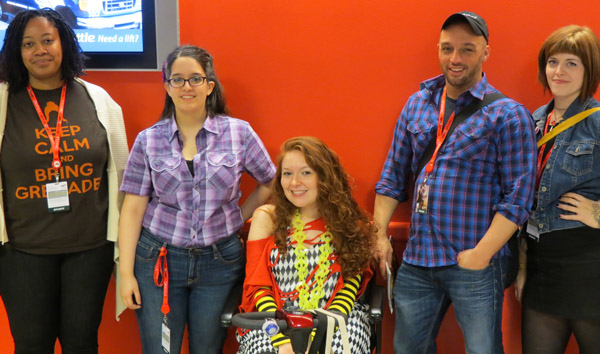
Left to right: N.K. Jemisin, Susana Polo, Jill Pantozzi, Phil Jimenez, Kate Leth (Jamal Igle had to run)



